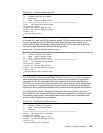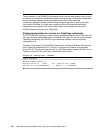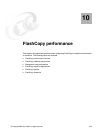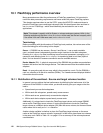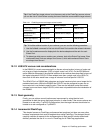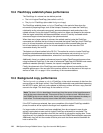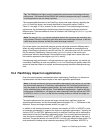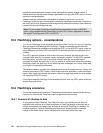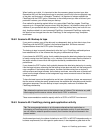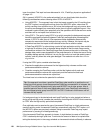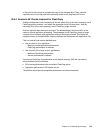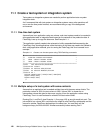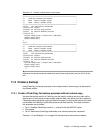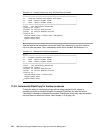
Chapter 10. FlashCopy performance 117
When backing up to disk, it is important to take the necessary steps to protect your data.
Remember that, until the background copy is complete, you still only have one physical copy
of the data, and that copy is vulnerable. Therefore, it is important to always establish the
FlashCopy with the COPY option. Otherwise, in the unlikely event you have a failure of your
production volumes, you will also lose your backup.
One method for protecting against failure is to use multiple FlashCopy targets. FlashCopy
supports up to 12 targets per source volume. With this feature, it is possible to keep up to 12
versions of your production data (for example, a FlashCopy backup every two hours for one
day). Another method is to use incremental FlashCopy. Incremental FlashCopy copies only
the data that has changed since the last FlashCopy, so the background copy completes
much faster.
10.6.2 Scenario #2: Backup to tape
If you want to create a copy of the data only to subsequently back up that data to tape, then
FlashCopy with the NOCOPY option is the preferred approach. Still there are some
implementations where the COPY option is employed.
The backup to tape is normally done shortly after the
logical FlashCopy relationships have
been established, for all the volumes that are going to be backed up to tape.
If you choose the NOCOPY option, that’s probably because the data being backed up to tape
is mostly coming from the FlashCopy
source volumes. If this is the case, then the location of
the target volumes is less critical and might be decided by considerations other than
performance.
If you choose the COPY option, that’s probably because the data being backed up is coming
from the target volumes, assuming that the backup to tape does not start until the background
copy completes. If the backup starts sooner, the data could be coming from a mixture of
source volumes and target volumes. As the backup continues, more and more of the data will
come from the target volumes as the background copy moves more and more of the data to
the target volumes.
To have the least impact on the application and to have a fast backup to tape, we recommend
that the source volumes be evenly spread across the available disk subsystems and the disk
subsystem resources. Once the backup to tape is complete, make sure to withdraw the
FlashCopy relationship.
These recommendations would be equally valid for a COPY or NOCOPY environment.
10.6.3 Scenario #3: FlashCopy during peak application activity
As discussed previously, the choice of whether to use COPY or NOCOPY depends mostly on
business requirements, but with regard to performance, it also depends a great deal on the
Tip: withdraw the pairs as soon as the backup to tape is finished. This eliminates any addi-
tional copying from the source volume, either due to COPY or collisions.
Tip: The recommended solution is to fully explore alternatives that would allow no
overlapping of FlashCopy activity with other peak application activity. If such alternatives
are not viable for whatever operative reasons, then consider the topics discussed in the
present section.



